- Home
- Ellen Datlow
The Best of the Best Horror of the Year Page 2
The Best of the Best Horror of the Year Read online
Page 2
Long Lankin by Lindsey Barraclough (The Bodley Head-UK 2011/Candlewick) was an excellent first novel marketed as young adult. Although two of the three points of view are children’s, this book should appeal to readers of any age. In the late 1940s, two young sisters from London are sent to stay with their great aunt in a small isolated village in rural England. Their aunt is strange and strict. The house is haunted, as are the grounds around it. The two child narrators overhear adult conversations and because it takes them longer to comprehend what’s going on than the reader, we fear for them. There’s a curse, a witch, ghosts, and a bog that can swallow a body without a trace. The unease creeps up on the reader slowly yet relentlessly, but it’s the individual voices of each character that makes this novel of fear and desperation so stand out. The last fifty pages are heart-grabbing.
The Devil in Silver by Victor LaValle (Spiegel & Grau) is horrific, but the supernatural element takes backseat to the vivid, depressing, terrifying depiction of the United States’ mental-health system. Pepper is big, rough, and angry, and through a moment of misplaced gallantry has ended up committed to and trapped in the New Hyde Mental Hospital, a place where the patients claim the Devil is stalking and murdering them.
American Elsewhere by Robert Jackson Bennett (Orbit) was one of my favorite novels of 2013. When a burned out, divorced, former cop inherits the house she didn’t know her mother (dead many years from suicide) owned in a town no one has ever heard of called Wink, Mona Bright decides to check it out, hoping to learn more about the mother she barely remembers. As the story rolls on, it expertly blends elements of science fiction, dark fantasy, and horror, all folded into the primary mystery of this Bradburyesque town.
Night Film by Marisha Pessl (Random House) is, if possible, both a page-turner and a slow burn of a novel in one of my favorite subgenres: film horror. Scott McGrath is an investigative reporter intrigued by the mysterious, reclusive underground filmmaker Stanislas Cordova, whose movies are disturbing, horrifying, addictive, and difficult to track down. There have always been dark rumors swirling around the director’s working methods and when McGrath gets too close, he’s set up—leaving his reputation and career shot to Hell. But he’s sucked back into the world of Cordova when the director’s twenty-four-year-old daughter falls to her death in a derelict building. Fuelled by anger and bent on vengeance, McGrath sets out to prove that Cordova is responsible for his daughter’s death. I particularly love the visionary weirdness reminiscent of John Fowles’ great novel, The Magus.
The Burn Palace by Stephen Dobyns (Blue Rider Press) opens strongly with the disappearance of a newborn baby and the scalping of a middle-aged man. These incidents and other frightening occurrences are making the residents of the town of Brewster pretty jittery. There are hints of the supernatural throughout: a young boy works on developing his skills in telekinesis, local coyotes don’t behave the way coyotes should, large, goat-like two-legged footprints are discovered, and a family man seemingly transforms into a rabid animal. Over the course of the novel the sense of unease created by the non-supernatural behavior of the humans in town begins to take precedence over the otherworldly, but this shift doesn’t decrease the suspense. Dobyns has delved in the dark with two excellent previous novels, specifically in The Two Deaths of Senora Puccini and The Church of Dead Girls.
N0S4A2 by Joe Hill (William Morrow) is rich in characterization and a terrifically satisfying read. We follow Vic through a magical girlhood during which she discovers an impossible bridge to the past where she can find lost objects. Unfortunately, she’s also noticed by an evil piece of work named Charlie Manx and his sadistic lunatic sidekick named Bing, who kidnap children and take them to a place called Christmasland, in a vintage Rolls Royce nicknamed “The Wraith.” The encounter reverberates through the rest of Vic’s troubled life.
The Enchanted by Rene Denfeld (HarperCollins) is a gorgeously written, exceedingly dark heartbreaker of a novel about an old, corrupt prison. A brilliant, dogged investigator takes on hopeless cases on death row, delving into childhood abuse and mistreatment for clues and mitigating circumstances to save the lives of men who have committed heinous crimes. One reclusive inmate believes that golden horses run free and wild under the prison, affecting the tides of violence that occasionally erupt behind the bars.
We Are All Completely Fine by Daryl Gregory (Tachyon Publications) is a brilliant short novel about a therapy group comprised of five men and women traumatized by violent supernatural events. As they learn to trust each other (slightly), they come to realize that their experiences might be related and that their ordeals may not be over. Clever, and filled with the kind of creeping dread at what’s in the flickering shadow next to you and what might be just around the corner, that suffuses the best horror.
The Southern Reach Trilogy: Annihilation; Authority; Acceptance by Jeff VanderMeer (Farrar, Straus & Giroux) is a compulsively readable, densely rendered, magnificently weird creation consisting of three connected novels. In the first, an expedition of four is sent into Area X—a section of the US that has been infected/colonized/altered by a possible alien visitation—to explore, survey, and search for clues to what happened to earlier, missing expeditions, and to measure changes to the terrain. The second and third volumes run in counterpoint, explicating, analyzing, and breaking down the elements of the first volume. In Authority, the reader meets Control, a conflicted former field operative put in charge of the expeditions into Area X presumably by the influence his mother wields in the organization.
The Girl with All the Gifts by M. R. Carey (Orbit/Grand Central) is an absorbing, fresh take on zombies by the pseudonymous Mike Carey. A young girl named Melanie, along with other children around her age, are kept shackled, muzzled, and imprisoned within a mysterious compound. They are also taught by an assemblage of teachers, only one of whom seems particularly compassionate. The children are zombies but zombies varying in intelligence, unlike the “hungries” outside the compound, who only seek to consume. The compound is primarily a laboratory in which experiments are being done on the children in a desperate attempt to save the human race from extinction.
Bird Box by Josh Malerman (Ecco) was a marvelous, suspenseful horror debut about the survivors of a mass extinction of humankind resulting from madness induced by seeing ... something. The two strands of the book follow Malorie and her two young children leaving the sanctuary they’ve lived in for several years and the other backtracks up to how she came to live at the house with other survivors.
A Head Full of Ghosts by Paul Tremblay (William Morrow) is a terrific novel about a teenager who manifests symptoms of schizophrenia. Doctors are no help. Her desperate father consults a Catholic priest who, feeding the father’s religious mania, believes the girl is demonically possessed and pushes for an exorcism. A reality show is produced about the family and their troubles. The story is told mostly from the point of view of the eight-year-old younger sister, who adores her sister but has mental/emotional problems of her own. Because of this and her youth, she may not be the most reliable narrator. It’s no coincidence that the younger of the two girls is named Meredith, shortened to Merry (pace Merricat from We Have Always Lived in the Castle).
Finders Keepers by Stephen King (Scribner) is terrific. I haven’t been keeping up with King’s novel output for a while so hadn’t realized this book was a sequel to 2014’s Mr. Mercedes, which I’ve not read. But that matters not. A novelist retires after writing a bestselling literary trilogy. The final book ends unsatisfactorily for at least one reader—a psychopath. There are rumors of a sequel and the unhinged reader wants to read that manuscript—at any cost, setting off a tense, terrifying series of events. This is a great novel about obsession and a writer’s responsibility to his readers.
The Library at Mount Char by Scott Hawkins (Crown) was an utterly refreshing debut about gods as monsters. A young woman who, along with several other neighborhood children, was plucked from a normal life when they were all orphaned in one de
structive event, is raised by a mysterious man who becomes their demanding “father.” Whenever the reader is certain of what comes next, the plot veers wildly into a different, perfectly controlled direction. This is especially evident about three quarters of the way in, when the story seems to be over. It’s not. A fabulous, exceedingly dark fantasy about the monstrosity of gods. By turns funny and horrifying, it hits every mark. While I don’t want to oversell it, this is the finest, most satisfying dark novel I read in 2015.
Experimental Film by Gemma Files (CZP) is another great example of weird fiction about arcane secrets behind movies and movie-making. A former film teacher suffering from depression and anxiety—because of dealing with an autistic child—is pulled into a mystery that becomes more and more dangerous to her and those around her. The novel’s about so much: Gods and what they require in their worship, the difference between looking and seeing, and knowing when to look away. The danger of obsession. Wonderfully creepy. Another great one from 2015.
Lovecraft Country by Matt Ruff (Harper) combines the harrowing horror of 1950s Jim Crow America with the supernatural horror of the Lovecraftian Mythos. In 1954, an African American man goes missing and his war veteran son sets out from Chicago with two companions to search for him. Each chapter tells a separate story that builds into a complete whole that exudes a sense of dread—almost more from the rampant racism than the monsters conjured up by a cult of sorcerers. But even so, this is most definitely a Lovecraftian story, with all the paranoia, conspiracies, family secrets, and cosmic horror that readers could hope for.
It’s the perfect companion to Victor LaValle’s novella chapbook, The Ballad of Black Tom. The Tor.com novella program started publishing science fiction, fantasy, and horror in 2015, but the first actual horror novella was The Ballad of Black Tom by Victor LaValle (acquired and edited by me). The author, who in his dedication relays his conflicted feelings about Lovecraft, reimagines “The Horror at Red Hook” with a young African American protagonist. Charles Thomas Tester is hired to deliver an occult book to an elderly woman in Queens. By doing so he becomes involves in arcane, mythos-inspired doings.
Mongrels by Stephen Graham Jones (William Morrow) is a gorgeous dark and moving coming-of-age story about a young, not-yet werewolf being brought up by his grandfather, aunt, and uncle who are all tasked with teaching him how to be a werewolf—what a werewolf can and can’t do, what can harm or kill it. Moving gracefully back and forth over a period of several years, clues are sprinkled throughout to the history of the family.
Hex by Thomas Olde Heuvelt (Tor) is one of the most unnerving novels I’ve ever read. A small town in upstate New York is cursed by a witch from the seventeenth century, a witch with her eyes and mouth stitched up. What is especially unnerving is that the witch mysteriously appears and disappears around town at will: in the street, in shops, in homes. Everyone in town knows there are rules that must be obeyed, or harm will come to them and their loved ones. One of the rules is that outsiders must never know of the curse, so the town is basically quarantined from the rest of the world. When a new family ignorantly moves into town despite all attempts to discourage them, a string of events begin to drive the whole town batshit crazy.
Most novel-length supernatural horror doesn’t work for me, as my suspension of disbelief usually falls away at some point. Hex manages to avoid this—perhaps because it’s both supernaturally and psychologically horrific.
The Fisherman by John Langan (Word Horde) is the terrific second novel by an author who has been making his reputation in the horror field by producing consistently powerful and literate stories for the past several years. In a perfect origami of stories within stories, a fisherman relates a tale of another kind of fisherman, who is seeking more than mere fish.
The Loney by Andrew Michael Hurley (Houghton Mifflin Harcourt) was originally published by Tartarus Press in 2014 and won the prestigious Costa First Novel Award in 2015. It’s a gorgeously written, powerful gothic novel about events that take place during three Catholic families’ religious retreat to the wild northern coast of Lancashire, an area known as the Loney. They go there to find a cure for the disabilities of the narrator’s brother, as the area is known to be ghost-ridden, full of mystery, and sometimes the provider of miracles. But there’s a cost. There’s always a cost. Literary horror at its best.
The Changeling by Victor LaValle (Spiegel & Grau) takes the reader for an emotionally wrenching rollercoaster ride when a horrific act destroys the seemingly idyllic life of a New York couple and their infant. Apollo Kagwa’s father disappears, leaving him with strange dreams and a box of books. Apollo becomes a rare book dealer and a father himself. When his wife, Emma, starts behaving oddly, he’s alarmed, but before he can do anything she does something horrible and unforgivable—and disappears. The story becomes a dark fairy tale about Apollo’s odyssey into a world just beyond our ken, with magic that can empower or destroy.
The Child Finder by Rene Denfeld (HarperCollins) is by the author of the acclaimed first novel The Enchanted, published in 2014. Is The Child Finder horror? Probably not, although it is a crime novel about child abduction and abuse. A young woman, herself a former child abductee, who remembers little of her experience yet is haunted by it, has taken it upon herself to find other lost and abducted children. The book is brilliant, suspenseful, heartbreaking, and thought-provoking. One of the best novels of the year.
Here are some of the best single-author collections I covered during the past ten years:
Mr. Gaunt and Other Uneasy Encounters by John Langan (Prime) was the first collection by the author and contains five novelettes and novellas, one novella published for the first time. Langan’s work is influenced by his work in academia and his interest in the literature of both Henry James and M. R. James. I’m especially fond of the title novella, “Mr. Gaunt,” but all his stories are worth reading. His fine story notes are illuminating to readers who want to know “where did you get that idea.” The Wide, Carnivorous Sky and Other Monstrous Geographies (Hippocampus Press), published five years later, was the author’s second collection of marvelously creepy short fiction. Langan especially shines at the novelette and novella length, and almost everything in the new book is those lengths. Eight were originally published between 2008 and 2010, one on the author’s blog. The one original is an excellent novella. With an introduction by Jeffrey Ford and an afterword by Laird Barron.
The Autopsy and Other Tales by Michael Shea (Centipede Press) is a gorgeous, over-sized, illustrated volume of twenty-one of the late author’s best stories and novellas, including some of my personal favorites: the creepy Lovecraftian, Fat Face and the novella I, Said the Fly. The book reprints all eight stories from Polyphemus, published by Arkham House in 1988. Laird Barron has written an introduction to Shea’s work. Also included is one story published for the first time.
Northwest Passages by Barbara Roden (Prime) was an impressive debut collection of ten stories (two appearing for the first time). Four of the reprints were given honorable mentions in The Year’s Best Fantasy and Horror series, and one was reprinted in #19. With an introduction by critic Michael Dirda.
Occultation by Laird Barron (Night Shade Books) was the second collection by a writer with a sure hand and a memorable voice. If you want literary horror with a fair share of visceral chills and the occasional shock, you’ll find no better. The three originals—two novellas and a short story—are all excellent. Several of the stories have been reprinted in my Year’s Best anthologies.
The Ones That Got Away by Stephen Graham Jones (Prime) is an important collection containing eleven powerful stories published between 2005 and 2010, with two new ones. Jones’s work is visceral, violent, and disturbing. With an insightful introduction by Laird Barron and story notes by the author. Several of the stories were reprinted in various Year’s Best anthologies, including my own.
Lesser Demons by Norman Partridge (Subterranean Press) collected ten stories published between 2000 and 201
0, one new. Partridge is a writer who is equally at home in whatever genre his tale falls: hard-boiled western, contemporary noir, or monster tale. The title novelette is Lovecraftian and very effective.
Lost Places by Simon Kurt Unsworth (Ash-Tree Press) was an excellent debut collection with eighteen stories, fourteen of them never before published. The stories are varied in tone, setting, and character. Several are particularly creepy.
The Janus Tree and Other Stories (Subterranean Press) was Glen Hirshberg’s third collection of short fiction and it’s as good, if not better, than his first two. Included are his eleven recent stories. The title story won the Shirley Jackson Award and several others were chosen for best of the year volumes. The two originals are both chilling.

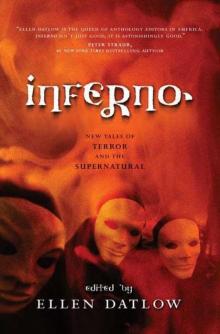 Inferno
Inferno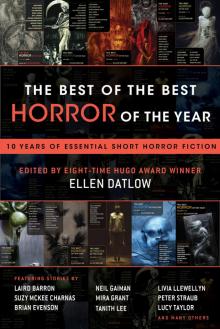 The Best of the Best Horror of the Year
The Best of the Best Horror of the Year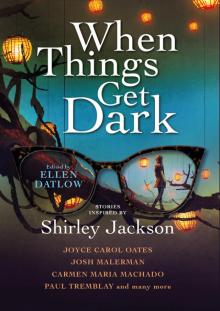 When Things Get Dark
When Things Get Dark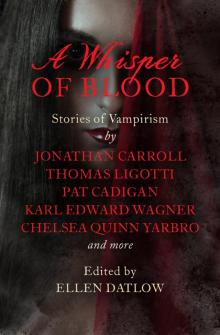 A Whisper of Blood
A Whisper of Blood Echoes
Echoes Blood Is Not Enough
Blood Is Not Enough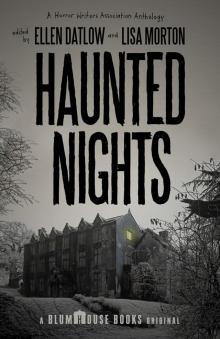 Haunted Nights
Haunted Nights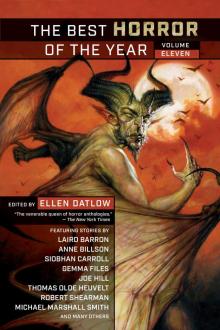 The Best Horror of the Year Volume Eleven
The Best Horror of the Year Volume Eleven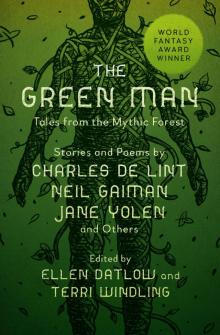 The Green Man
The Green Man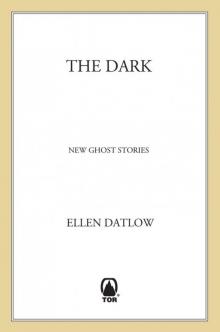 The Dark
The Dark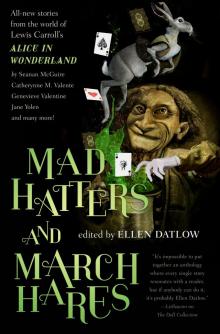 Mad Hatters and March Hares
Mad Hatters and March Hares Nebula Awards Showcase 2009
Nebula Awards Showcase 2009 The Devil and the Deep
The Devil and the Deep